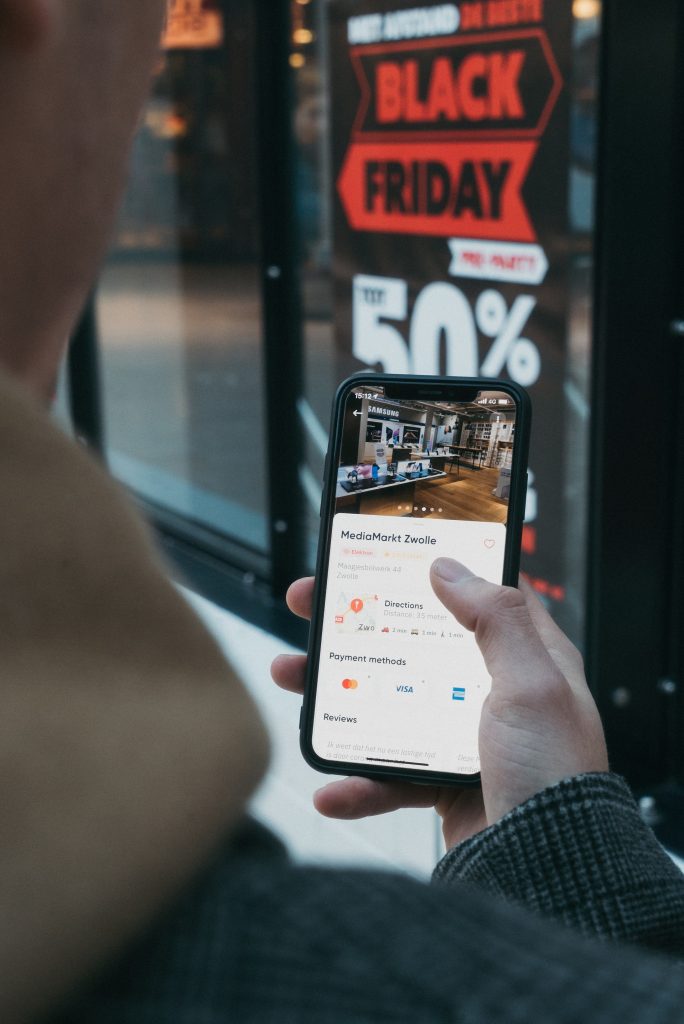It’s no secret that eCommerce is a huge industry, and it’s only getting bigger. Millions of people shop online daily, meaning millions of opportunities to make money from your business. However, with so many options for buyers looking for the best deals or products on the market, you need to find ways to make sure your site stands out from the crowd. Here are some eCommerce and online marketing tricks that can help:
Do some research on your competition.
When starting your eCommerce marketing strategies, it’s essential to know what other stores are doing right and where they might fall short. You should take a look at how they present themselves online and make a note of any areas that you can improve upon. This includes things like:
- Title tags and meta descriptions (the text that appears in search results)
- Social media presence
- Website speed and design
- Product descriptions and photos
- Customer service
- Pricing
Learning as much as possible about your competition will help ensure that your eCommerce website is not behind the times and is in line with current industry trends. It also enables you to identify potential gaps in your competitors, which helps you meet your customers’ needs more effectively.
Render your site error-free.
If your site is full of errors that can be easily fixed, you’re doing a disservice to your customers. Make sure you have a process that checks for spelling mistakes and broken links and ensures your page loads quickly on any device. If it doesn’t, the customer will leave and never see the rest of what you have to offer them.
Site load speed is essential.
Site load speed is another type of error that you should not overlook.
Make sure your website is fast and responsive. No one wants to wait for a slow website to load, so make sure yours is up to speed. Users nowadays are more impatient with their online use, and a slow site load speed can significantly hurt your chances of ranking well on SERPs.
This means having a well-designed website that is easy to navigate and loads quickly. If unsure how your site measures up, run a test with Google’s PageSpeed Insights tool. Just enter your URL, which will give you a score for both mobile and desktop versions and suggestions on improving your speed.
Improving your site’s load speed will also mean optimising your site’s images and visual elements, so do a thorough sweep of your site to ensure everything is optimised well.
Put together a package of freebies for first-time buyers.
If someone is new to your online store, give away something related to the product they are purchasing. For example, if they buy a juicer, you might include a recipe guide or tips for using it.
One idea is to offer an ebook with helpful information on how best to use the product and what other products complement it well. This could be anything from recipes or tips on where else you can use the exact item (e.g., “these knives are great for cutting up vegetables for salads”).
Another option is an ebook about how your customers can get more out of their new purchase—for example, an ebook discussing how people can incorporate cooking with their juicer in creative ways that will save them time and effort (and money!).
If you sell products like makeup and skincare, a first-time discount coupon on a new customer package that contains your bestsellers is a great way to introduce new customers to your products.
Make sure you have a solid shipping policy.

A shipping policy is essential to your eCommerce site’s checkout process. It should be straightforward to understand and consistent across all channels.
Shipping policies shouldn’t overwhelm shoppers with technical details; instead, they should be simple enough that customers are willing to accept the terms to complete their purchase.
Offer promotions and discounts to regular customers.
You can also offer promotions and discounts on your products to drive sales.
Offer free shipping for all orders over $30 or a coupon code that gives 10% off an order of $20 or more.
You should also give discounts to your loyal customers and encourage them to refer their friends. This is a win-win situation because you reward the customer with something that benefits them. Still, it enables them to share what they love about your business with others, thus increasing brand awareness and sales!
This should be applied for both online and offline stores alike – offering discounts when purchases are made in-store will help drive people out of their homes (and away from other outlets), so they can visit your store instead of another one nearby!
Have solid metrics to monitor your sales, email campaigns, and social media efforts.
Once you have a clear sense of your target audience, you’ll want to create metrics that will help you understand how well your business is performing. The most basic metric is the number of sales made, but to make this metric useful, it’s best to break down the numbers further.
For example, if there are ten different kinds of products sold on your site, each with its price point and profit margin, then having a single overall sales number won’t tell you much about which products are driving profits.
You might sell more items at $10 than $1 each—but if all of that revenue comes from one item instead of many different ones across different price points? That could be bad news for your bottom line.
Make sure you add a newsletter signup form on your checkout page so you can build your mailing list.
One of the easiest ways to increase sales is by building a mailing list, a strategy to add to your eCommerce marketing plan. The more you can understand your customers, the better you can serve them and make their lives easier.
If you want to grow your business, collecting as much information about people as possible is in your best interest.
A strong email marketing strategy is a great way to keep customers interested in your store and products and is an excellent addition to your eCommerce marketing strategy.
How do you build an email list?
Building an email list is crucial for eCommerce success. Your customers will be more likely to stay loyal and buy from you again if they know that you consistently send them relevant information about new products and sales, special offers, coupons, etc.
Email marketing has proven itself as one of the most effective ways of reaching potential customers at scale. MailChimp says, “Email still drives two times more online sales than Facebook or Twitter combined.”
So how do you build your eCommerce email marketing strategy?
The best way to do this is by having an email signup form on your website or blog. This way, if someone decides they like what they see in products or services, there is someplace accessible where they can go back later and shop again.
Optimise the checkout process
Another way to help boost your sales is by optimising the checkout process. When customers complete their purchase, make it quick and easy for them to get through without extra work.
That means ensuring you have all the information required to finish checking out before they arrive at that step of the process.
Also, ensure that you’re not charging them things they don’t expect or giving away too much information about yourself when they give their email address.
This way, you can send emails with promotions later on in their lifecycle and other updates about what’s going on with your brand.
Incentivise the checkout process
An excellent way to encourage people who haven’t made a purchase is through discounts and incentives like offering free shipping (and even expedited delivery) when they buy x number of items from your store. This encourages people who are just browsing around but don’t want anything right now because it makes sense financially for them.
One last thing we would recommend doing here is asking if there’s anything else you can help with before proceeding through your order form – this gives you a chance to find out more about your visitors’ needs and potentially gain new clients.
Track your costs and sales
Tracking your costs and sales is essential because it helps you to know if a marketing campaign is worth the investment. You can use this data to plan future campaigns, ensuring they’re as successful as possible.
Identify what to track.
How do you track cost and sales? First, identify what each product costs to make or buy. This may require some research, but it’s crucial to calculate profit margins on each item to determine how much profit you’re making overall on the products offered by your eCommerce store or online business.
Then, consider what price point makes sense for your customers—and remember that this doesn’t just mean considering how much money they have! Consider who would be interested in buying from your store based on their demographics (age range) and psychographics (hobbies).
Are there certain things that might appeal more strongly than others? Do they want something unique? Alternatively: Do they want something more affordable than competitors’ offerings? Or maybe something of higher quality?
Lastly: How are people finding out about what you offer? Are there any strategies you could use instead of relying solely on word of mouth alone, such as advertising through social media platforms like Facebook Ads or Google AdWords, where most consumers spend their time these days anyway?
Some eCommerce stores rely on Search Engine Optimisation (SEO) to boost their visibility on search engines. If you use this for digital marketing, ensure your site is optimised. When done right, search engine marketing can significantly improve your online visibility.
Once again: What appeals most strongly here; affordability versus quality; originality versus familiarity?”
Share your customer’s reviews.

Customer reviews are critical. 90% of consumers say they trust online ratings and reviews as much as personal recommendations. That’s why you should make it easy for customers to share their experiences with your company on social media and review sites like Yelp, Facebook, Google and TripAdvisor.
You can provide a link to your customer’s review on your website or app. Customers want to know that their feedback is valuable, so make sure you have a way for them to contact the business directly through an email address or phone number if they have any questions about their experience.
This helps build trust with potential customers too!
Customer reviews can also help with SEO by giving prospective customers more information about what services or products people find helpful based on previous interactions with those businesses before coming into contact with yours (or not).
Focus on conversion rates.
The conversion rate is the percentage of people who make a purchase. It’s the most critical metric for eCommerce businesses, but it’s also affected by many factors: pricing, product quality, and website design.
A reasonable conversion rate will depend on your industry and target market. You should aim at least 4% to make money from selling online!
Write compelling copy.
Writing compelling copy starts with knowing your audience and what they want. For example, if you’re selling jewellery online, your shoppers are likely looking for something unique.
So instead of writing a long paragraph about the quality and craftsmanship of your products, use enticing keywords that spark something in your customers.
Describe your products
You might even be able to include a few bullet points below each product listing that highlight exactly how the item is unique or artisanal (e.g., “Handmade”). In addition to using keywords throughout the copy, ensure you’re also using them elsewhere on your site. This includes meta titles and descriptions, as well as headlines and subheadings.
The next step is ensuring all this text isn’t dull but engaging: Write for people instead of computers! Remember that eCommerce shoppers are looking for reasons not only why they should buy from you but also why they should buy from no one else. Don’t hesitate to use emotional language when talking about yourself or the product benefits at hand (e.g., “Why choose us?”).
Use keywords to your advantage in your website copy.
The first step is ensuring that you have the appropriate keywords in your title tag, meta description, URL and content. This can be done using a keyword research tool like Google’s Keyword Planner or Ahrefs.
When adding relevant keywords to these areas on your site:
Title tag
Your title tag should include the primary keyword you want people to search for when looking at your product or service. It doesn’t need to be an exact match of what someone will search for, but it should show them exactly what they are looking for within the first few words of their search query.
Meta description
Your meta description is another place where you can use keywords effectively! Ensure that all your meta descriptions are between 150-160 characters long (including spaces) to not distract from or dilute any of the information contained within this section.
These sections also tend to be displayed in search results alongside images, so make sure yours stands out by using relevant phrases that will interest potential customers!
Use influencer marketing.

Influencer marketing is a great way to reach a wider audience and build trust with your target audience. Influencers are often more trusted than brands, so they can help you build brand awareness and create a loyal following.
Influencers also can reach people who may not read your blog or visit your website, so this strategy can help you reach new customers (and get them interested in what you’re selling).
If influencer marketing sounds like something that would be right up your alley, here are some tips for making it work:
Find influencers who align with the goals of your business.
You want someone with an established following and expertise on the topic at hand—a blogger writing about travel rather than food might not be the best choice for promoting an eCommerce site specialising in local organic products from local farmers around the world!
Make sure each campaign has clear goals before beginning any partnership with an influencer campaign.
If one goal is brand awareness and another goal is a sales conversion rate increase by 20% over last year’s results after six months of running influencer campaigns every month, then we need two separate campaigns.
One campaign should focus solely on building trust within our target market without directly linking to our store (this could mean creating videos/articles/blog posts that teach how-tos).
The other should focus on driving traffic back towards your site. Users may become repeat visitors who eventually make purchases because they know they’ll receive quality service each time they shop online.
Create a content marketing strategy.
A content marketing strategy can help you build trust with your customers, drive sales and keep existing customers engaged. Content marketing is also great for building a community around your brand.
Here are some tips for creating an effective content marketing strategy:
- Create a plan for your company’s blog or website that outlines what type of posts you’ll be publishing, how often they will be published and where the post will appear on the site (e.g., homepage or landing page).
- Make sure each blog post contains only one topic, so it’s easy for people to find when searching online! You’ll want to include keywords in the title tag so that anyone researching this topic finds it quickly when searching Google or Bing/Yahoo search engines (which is how most people find info nowadays).
Utilise social media marketing to attract followers.
Social media is a great way to reach out to potential customers and build your brand in the digital world. When using social media, you can post pictures of products you sell or give advice about how to use them.
Social media can also promote your business by posting promotional offers such as discounts or free items for people who purchase certain products from your store.
This will help attract more customers who might not have known about you otherwise, so it is worth considering doing this type of promotion if possible!
Consider remarketing.
Remarketing is a way to show ads to people who have already visited your website. It can be used as a way to promote your products but also as a way to promote other products that are relevant to your brand.
On Facebook and Google, remarketing allows you to create specific audiences based on the information they’ve given you through their browsing history, such as what they’ve clicked on or purchased in the past. You could also use this advertising platform with an affiliate network or email list.
Conclusion
So there you have it—a few things you can do to promote your eCommerce store and drive sales. With these tips under your belt, you’re sure to see favourable results with your online sales.











